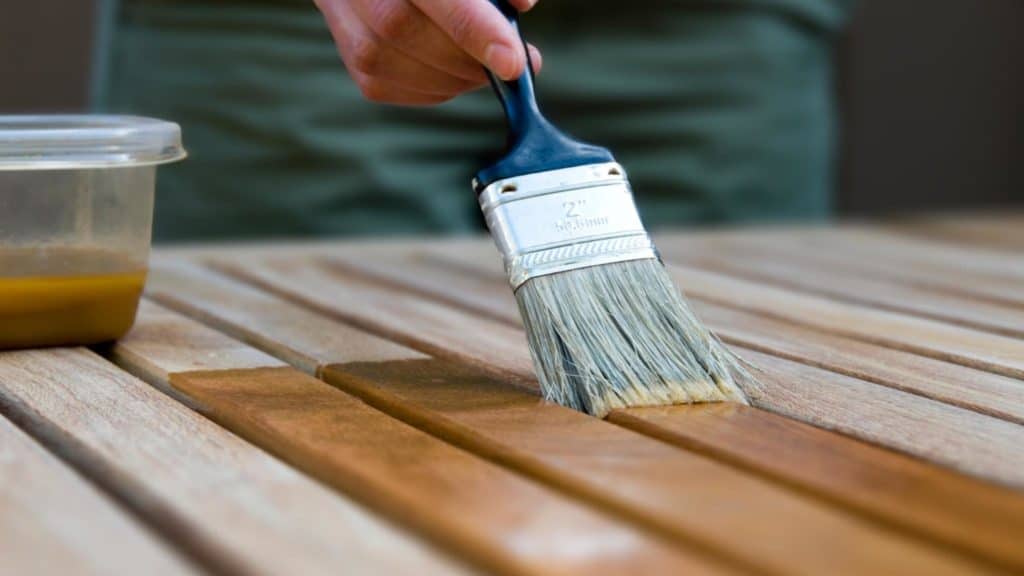Stain durability and where stain is important to protect wood species.
Pickling is a great thing to do.
As a painter I can know that.

The best thing about staining is that you can see the original wood again, which makes it even stronger and more beautiful, if I start from white stain or semi-transparent.
Anyone can do this and it is really not difficult to apply.
The main thing is that you first thoroughly degrease the bare wood!
Of course also previously stained surfaces.
Then lightly sand with 240 grit sandpaper.
You can also take a scotch brite, then you can be sure that you won’t get any scratches.
Especially if you choose a transparent stain.
In this post we'll cover:
What can you use stain for?
Stain is intended for exterior painting.
You can also use it for the facade paneling of your house such as buoy parts, wind springs.
Rebate parts are also often stained because you can see the beautiful structure of wood.
In addition to these parts, it is also suitable for doors, frames and any shutters.
Stain is also extremely suitable for the maintenance of fences.
There is a product that is suitable for every element.
Different types of stain
There are different types of stains on the market.
For fences you have different stain than for window frames.
Fences are subject to weather influences, so this stain must be water-repellent and moisture-regulating.
The same applies to garden furniture, you can also protect it extra against aging, there is
what type of wood it is, soft or hard.
The composition of stain is different for facade panelling.
These stains offer the right balance between moisture regulation and UV protection.
This stain is available in opaque and colorless, so to speak.
Windows and doors
The moisture-regulating effect does not play a major role in the case of windows and doors.
This is where it really comes down to UV protection.
This wood is of high quality and dimensionally stable.
The effect is therefore very different, because it does not shrink and does not expand.
However, there is a lot of sunlight and therefore needs good UV protection.
The stains I work with (I’m not advertising here), are mainly the Master stains.
What is also very well known in the painting world is the Ceta Beaver.
You don’t need to apply that many layers because the opacity is good.
This is definitely worth a recommendation!
If you do it right, you don’t have to do any maintenance for the first 4 years.
A pickling offer is always attractive. By investing some time in it, it always pays to track nice offers. You read the brochures or scour the internet. Take the time to do this and compare price, content and features. If it is exactly the same product, buy that stain offer. Via online you have to calculate the shipping costs and the shipment at sight as extra work. Who takes care of it and how. Once you’ve decided on that, you can make a choice. Pay special attention to the fine print and conditions.
Buy stain for exterior painting
Stain has the property that it can withstand moisture well. It prevents, as it were, the penetration of moisture into the surface. Constant moisture eventually means wood rot and you want to prevent that. Stain is, as it were, moisturizing. Moisture can escape, but not get in. Depending on your wishes, you can buy a transparent stain where you can still see the wood structure. If you want to see some structure and then with a color, you buy semi-transparent stain. If you no longer want to see the grain and structure, you can buy an opaque stain.
New and used wood
If you have a new shed, fence, pergola, log cabin or other wooden part outside, it is recommended that you apply at least three layers of stain. After that, maintenance is carried out every two to three years. If it concerns an already painted surface, a coat is sufficient and maintenance every two to three years.
I'm Joost Nusselder, the founder of Tools Doctor, content marketer, and dad. I love trying out new equipment, and together with my team I've been creating in-depth blog articles since 2016 to help loyal readers with tools & crafting tips.

